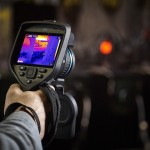We’ve all seen the old western movies during the gold rush era, where many people are on a life-long mission of finding a gold mine. Many sunk entire fortunes and their lives prospecting with a pan in a river. However, in modern times, mining for gold (and any other mineral, precious metal and fossil) is much more intensive, yet sophisticated. The most important step of finding anything of value under the earth is prospecting.
Prospecting is the first step of geologically analyzing a territory. It’s a small-scale version of mineral exploration undertaken by many mineral companies in the search of finding commercially viable ore deposits. It’s a very physical process, involving a lot of specialized equipment, traveling, panning, sifting and investigating.

The first step to prospecting is finding deposits. In order to do this, geologists use specialized maps to look for promising areas. They examine the chemical and physical characteristics of the surface rocks to determine whether there’s anything valuable in the ground underneath. Once that’s confirmed, they start analyzing by performing drill tests using a wide array of techniques, such as geophysics, geochemistry, remote sensing, etc.
The next step is gathering rock samples and placing them in a storage tray with compartments in order to bring them to a lab to be closely examined. Mining engineers and geologists alike use these samples to determine whether something of value actually exists, and if it does, they determine its size and quality.
Furthermore, if it’s decided that the operation will be worthwhile, engineers should determine the mining method and work around any obstacles that might arise. More importantly, they will evaluate the impact the operation will have on the surrounding environment. If they get a green light, they can start tailoring the necessary infrastructure for the operation to run, such as roads and processing facilities.
Once the mining begins, samples will need to be collected in a storage tray with compartments from all the different valuables found, in order for the exact metallurgical qualities of the ore can be examined. This is a very important step in order to determine the best processing technique. Low-grade ore processing is quite simple, while high-grade processing is a very extensive process.
Lastly, the ore needs to be refined in a refinery to remove impurities. Crude gold, for example, is melted and treat with chloride. This is done so any unwanted foreign metals are converted to chloride instead of drifting off the gold. You then get 99.5% pure gold, and to further purify it, you need to cast it into electrodes where it’s placed into an electrolytic cell and a current is passed through the cell, resulting in 99.99% pure gold.


